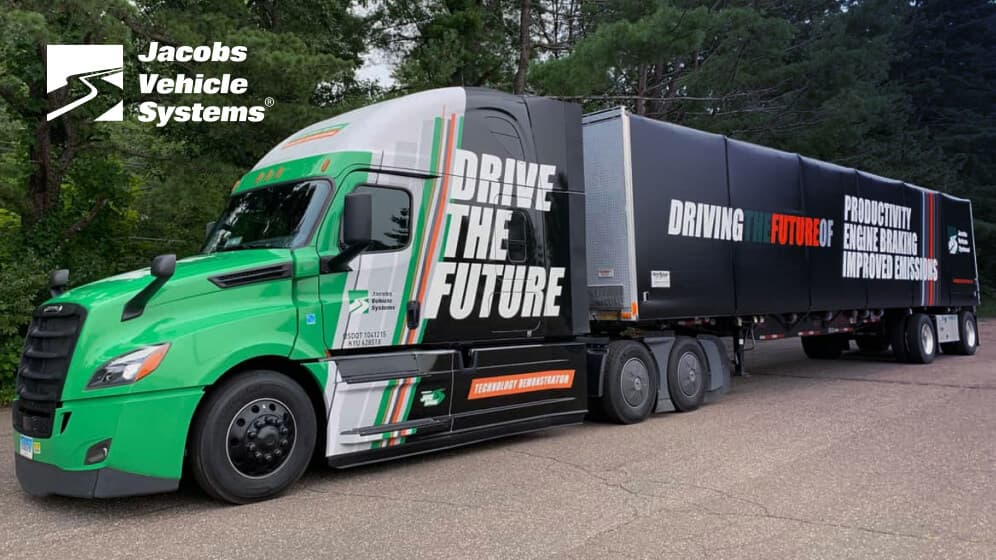Jacobs Vehicle Systems Replaces Legacy Tools with EASE

Overview
A global automotive supplier looking to improve visibility into quality decided to replace its manual paper-based audit system with EASE software. Six months after implementation, the organization has increased audit completion rates more than 40% and created more accountability around corrective actions.
“I highly recommend EASE to any organization using paper and pencil or other manual spreadsheet LPA systems. The savings in administrative tasks and data collection is well worth the investment.”
—John Rose, Quality Systems Manager, Jacobs Vehicle Systems
Background
Jacobs Vehicle Systems is a leading manufacturer of advanced engine braking systems and valve activation technologies, with manufacturing locations in North America, Europe, and Asia. The company had conducted paper-based layered process audits (LPAs) for many years. In 2012, they launched a visual management process called Kamishibai—Japanese for “paper drama”—to structure audits using cards randomly selected from two decks.
The team would choose a card from the first deck to determine the audit location. The card selected from the second deck indicated the process to audit, showing acceptable results on one side (colored green) and non-compliant results on the opposite side (colored red). Auditors would post results on a dry erase board, then log them in spreadsheets.
Following Up on Findings Was Next to Impossible
While the Kamishibai system helped bring to light important quality issues, it created difficulties around scheduling, corrective action, and communicating results. “Scheduling wasn’t really random, and following up on findings was next to impossible,” says John Rose, Quality Systems Manager.
Communicating findings was also ineffective, requiring a lot of manual follow-up to try to help people understand quality issues. Rose suggested to management that the organization could benefit from a new, more efficient way to conduct LPAs and other audits. For better results, he stated they need to be able to ask more questions in each audit, randomize scheduling, and improve reporting to fix problems faster.
Saying Good-bye to Paper & Spreadsheets
After seeing the problems with the Kamishibai system, Rose suggested the team look at the EASE digital audit platform, which he’d used in a previous quality role. “The dynamic nature of the software and ease of use were instrumental in convincing management to move forward,” Rose says. “Adding and updating audit questions in EASE is dramatically easier and faster compared to our previous Kamishibai process.”
The organization found the cloud-based web application particularly appealing, allowing team members to complete audits electronically with real-time reporting.
Jacobs first launched EASE in its Bloomfield, Conn., plant. During the process, Rose was impressed at how the implementation team truly understood his company’s organizational structure and goals, providing suggestions to get the most from the platform.
“The training and tech support was unsurpassed,” said Rose. “The EASE team clearly listens to the voice of the customer, and we’ve benefitted from the frequent software updates.”
Measurable Results: From Accountability to Performance
Results of implementing EASE include a more than 40% increase in audit completion rates, as well as improved accountability around addressing audit findings. Scheduling across different locations is also more evenly distributed, minimizing audit gaps that allow process risks to grow unnoticed.
According to Rose, the ability to easily update and add questions is a major time-saver.
“With the paper cards, we’d have to go to the spreadsheet, type in the words, take a picture and scan it, print it and laminate it,” he says. Maintaining the card decks was cumbersome, and the process didn’t make it easy to clarify confusing questions. He says the team unanimously agrees that EASE is far easier to use and makes auditing much more efficient.
Today, Rose can change questions and monitor results, remove questions that always pass, and add new questions for process changes or complaints. “Many of our questions also help us prepare for third-party audits,” he says.
Every week, Rose gives a performance update during his plant’s daily staff meeting, and he’s able to quickly pull audit completion results and Pareto charts of top issues. Part of that weekly meeting includes holding people accountable for corrective actions. Rose says there’s much more visibility around overdue open actions, helping him spot bottlenecks in the process.
“It’s not to call them to the table, but it’s to say, ‘Hey, what’s the hold-up? Did you just have too much to do last week, or is it because this finding needs a very long corrective action?’” he says. “It’s having those open conversations that weren’t really happening before.”
Building a Global Culture of Quality
On a larger scale, the new audit process is helping Rose and his team drive cultural change. More dialogue is happening around proposed solutions, with team members discussing which fixes will be most effective.
“We’re getting to where most of our organization is comfortable doing audits,” Rose says. “Management is also getting comfortable looking at what the reports are telling us, and what our long-term, systemwide corrective actions need to be.”
After piloting the software at its Bloomfield location, the team decided to deploy EASE in two more global plants, in China and the Czech Republic. The team has also expanded the use of EASE from LPAs to include safety and 5S audits.
In monthly management meetings, leadership can now easily review top-level metrics for all locations. Rose highlights the ability to spot trends across the plant and even across global sites as a key factor in communicating lessons learned for continuous improvement.